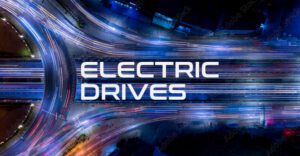Ducati have unveiled the technical details of its MotoE project electric motorcycle. The “V21L” prototype is the first electric motorcycle from the Bologna-based manufacturer. The new prototype electric motorcycle is expected to compete in the FIM MotoE World Cup from 2023.
Ducati will be a partner as the sole supplier with 18 bikes on the track during each race weekend. The MotoE project has strategic relevance for Ducati since it makes it possible to develop expertise for the future and use trickledown technology for its future customer electric bikes.
Claudio Domenicali, Ducati CEO: “A few weeks ago I had the extraordinary opportunity to ride the Ducati MotoE on the track and I immediately realised that I was living in a historic moment.
“The world is going through a complex period and environmental sustainability is an element that all individuals and all companies must consider a priority if we want to preserve the delicate balance of the planet.”
“As Ducati, we have grasped this need and we went in search of a challenge that would allow us to contribute to the common goal of reducing CO₂ emissions and at the same time to keep faith with our DNA linked to racing.”
To produce the MotoE prototype, the Bologna-based motorcycle manufacturer put together a team that unites Ducati and Ducati Corse designers. The creation of the bike followed the procedure that is usually adopted for production bikes, triggering a close collaboration between the members of the team that led to new ways of thinking and designing, encouraged by such a technologically challenging project.

Domenicali added: “With determination to develop the most performing electric racing bike that current technology makes possible and to use this project as a laboratory in which to build our future.
“The result we have achieved is surprising. As soon as I sat on the bike I realised the quality of the work done by the team and when I returned to the garage I felt a deep sense of pride for what we were once again able to achieve.”
Ducati have revealed full details of the MotoE that weighs just 225kg and has maximum power figures of 110kW (150hp) and 140Nm respectively, which allowed it to reach a speed of 171mph (275kph) during testing.
Vincenzo De Silvio, Ducati R&D Director: “Racing competition represents the ideal terrain on which to develop innovative technologies that will then transfer to production motorcycles.
“At this moment, the most important challenges in this field remain those related to the size, weight, autonomy of the batteries and the availability of the charging networks.
“Ducati’s experience in the FIM MotoE World Cup will be fundamental support for product R&D, together with the physiological evolution of technology and chemistry.
“Helping the company’s internal expertise to grow is already essential today to be ready when the time comes to put the first street electric Ducati into production.”
The battery pack in the MotoE weighs 110kg and offers a capacity of 18kWh with a 20kW charging socket integrated into the tail. Inside there are 1,152 cylindrical cells of the “21700” type.
While Ducati didn’t reveal who they worked with for the battery, we know that they have been collaborating, as have many motorcycle brands including Energica, Harley Davidson, Norton and Triumph, with Oxfordshire-based Williams Advanced Engineering (WAE).

The inverter on the MotoE, with a weight of just 5kg, is a unit derived from a high-performance model used in motor racing for electric vehicles. The motor, which weighs 21kg and offers a maximum rotation speed of 18,000rpm, was developed by a partner following the technical specifications provided by Ducati.
The entire system is based on a voltage of 800V (with a fully charged battery pack) to maximise the output of the electric powertrain and, as a consequence, performance and range.
One of the most advanced technical solutions on the Ducati MotoE concerns the cooling system. The prototype components are cooled by a particularly sophisticated and efficient liquid system. It features a double circuit designed to meet the different thermal needs of the battery pack and the motor/inverter unit.
This guarantees extreme regularity of temperatures. This has important benefits in terms of consistency of performance but also in charging times. It is not necessary to wait for the battery pack to cool to start the process. The Ducati MotoE can be charged as soon as it enters the garage and it takes around 45 minutes to recharge it up to 80 percent of its range.
The carbon fibre case of the battery pack also acts as a stressed part of the chassis. This is paired with an aluminium monocoque front frame weighing 3.7 kg. The rear is composed of an aluminium swingarm weighing 4.8 kg with geometry similar to that of the Ducati Desmosedici racing in MotoGP.
The rear subframe, which integrates the tail and the rider seat, is made of carbon fibre. The suspension area features an Öhlins NPX 25/30 pressurized fork with an Öhlins TTX36 rear shock absorber. Braking is taken care of by Brembo.
The fact that Ducati belongs to the Volkswagen Group, which has made electric mobility an essential element of its “New Auto 2030” strategy, represents the best prerequisite for an extraordinary exchange of expertise in the field of electric powertrains.
Ducati is in close contact with the Group’s centres of expertise and with the Centre of Excellence (CoE) at Salzgitter in Germany, but also with other brands of the Group such as Porsche and Lamborghini.
The work plan of the Ducati MotoE project has already reached an advanced stage of development and is proceeding at a rapid pace towards 2023. The next objective for the Bologna-based manufacturer is to take advantage of participation in the most important racing competition in the world for electric motorcycles.
This will be to experiment with innovative technologies, train new skills and study how to create, as soon as the technology will allow, a Ducati electric vehicle that is sporty, light, exciting and able to satisfy all enthusiasts.



